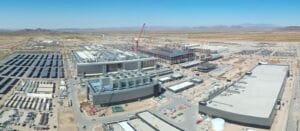GSE Influence
Another advantage the multi-family market has, Anderson says, is that while many conventional credit sources for other sectors are still suffering the effects of the credit implosion, apartments can be financed through Fannie Mae and Freddie Mac — providing much needed liquidity that the other commercial sectors are lacking at present.
 The National Real Estate Investor reported in April that by the end of 2009, the U.S. government had pumped more than $125 billion into Fannie Mae and Freddie Mac to keep them solvent. The GSEs, including Ginnie Mae, held $363 billion in multi-family loans in their own portfolios at the end of 2009, according to the Mortgage Bankers Association. That accounts for 11 percent of outstanding commercial multi-family mortgages, or 40 percent of the total multi-family debt outstanding.
The National Real Estate Investor reported in April that by the end of 2009, the U.S. government had pumped more than $125 billion into Fannie Mae and Freddie Mac to keep them solvent. The GSEs, including Ginnie Mae, held $363 billion in multi-family loans in their own portfolios at the end of 2009, according to the Mortgage Bankers Association. That accounts for 11 percent of outstanding commercial multi-family mortgages, or 40 percent of the total multi-family debt outstanding.
On Dec. 24, 2009, U.S. Treasury Secretary Timothy Geithner lifted the $200 billion cap on federal aid to both Fannie Mae and Freddie Mac through 2012.
“The government understands GSEs must support the rental market, as banks do not want to take properties on their balance sheets,” Brock says. “The GSEs are the only loans available to take out a multi-family problem property — without GSEs there is no market.”
Rocco Mandala, executive vice president of CBRE’s Capital Markets in Phoenix, agrees that GSEs have had a very positive effect on the multi-family market in Arizona.
“GSEs are very willing to underwrite and pursue financing for multi-housing in the state,” he says. “However, they are taking a more conservative approach in Arizona versus other markets around the country. For example, the debt coverage ratio in Phoenix is 1.30x, and in select cases 1.25x. The loan-to-value requirement is 75 percent on seven and 10-year loan terms, and 70 percent for a five-year loan term. Based on current interest rates and cap rates, loan amounts are mostly constrained by the debt coverage ratio rather than loan-to-value.”
Mandala states that today, 90 percent or more of all financing for stabilized apartment projects in Arizona is financed by Fannie Mae, Freddie Mac or HUD, with some life insurance company participation.
Distressed Assets
“Current apartment listings in Metro Phoenix consist of either distressed properties — REO or otherwise — or conventional sales by owners/developers who want or need to recoup remaining equity,” Anderson says. Th e vast majority of the apartments that have bee taken back by lenders are Class B and C, with some recent sales occurring at prices below $10,000 per unit.
“You can buy a building well below replacement cost, and well below what the property might have traded for three to five years ago,” Goff says.
According to Pete TeKampe, vice president of investments for Marcus & Millichap, his firm has listed, sold and closed more than $1.7 billion of lenderowned or special-serviced assets.
CB Richard Ellis is currently marketing one of the state’s largest distressed multi-family assets, the 375-unit, high-rise Centerpoint Condominium project in Tempe. “This project,” Anderson says, “has been through bankruptcy as well as foreclosure, but is still a trophy property for a far-sighted investor with deep pockets.”
Anderson notes that Class C REO properties and broken condo projects remain the most acquired distressed assets in the Greater Phoenix marketplace. Geographically, the Class C communities are located in the older neighborhoods of Phoenix, Mesa and Glendale, while the broken condo deals are spread across the Valley, from the central cities to Fountain Hills.
In Tucson, Sandahl reports that one over-leveraged asset sold in the first quarter of 2010 — a 428-unit, Class B community located on the city’s Northeast side. “There are several other communities currently under contract or on the market,” he says. “Three upper end, 200-plus unit communities are in escrow — two in East Tucson and one in the Northwest submarket. And a portfolio of 13 assets, primarily located in Central and South Central Tucson, is currently for sale.”
Market Forecast
With additional stock entering the market and soft leasing activity forecast through the first half of 2010, TeKampe says multi-family vacancy is projected to rise 30 basis points in 2010 to 12.6 percent. Last year, vacancy increased 120 basis points. Additionally, asking rents will fall 2.5 percent this year to $729 per month, as owners attempt to improve occupancy levels. And with concessions forecast to increase to 10 percent of asking rents by year end, effective rents will decline 3 percent to $656 per month.
In Metro Phoenix, new apartment construction is expected to end in the middle of this year, Anderson says, with no new development expected for the next six quarters or more.
As for potential development opportunities, Sandahl reports those also will increase as the market recovers — driven by Tucson’s aging apartment inventory and lack of Class A product. As for Greater Phoenix, Cribbins says to expect new development growth pockets to pop up across the Valley, but predominantly in the Eastern and Northern portions of the Valley capped at Loop 101.
As for future investment opportunities, Goff says activity will increase in 2010 as the recovery becomes more defined, and more institutions become comfortable with the marketplace.
 “Buyers are local or regional private-capital, entrepreneurial-style buyers,” he says. “As fear leaves the marketplace, more institutional groups will buy the properties from these buyers, and those entrepreneurial buyers will be one of the groups in the cycle that will make the most amount of money. They will be rewarded for that type of risk when recovery is not as clear.”
“Buyers are local or regional private-capital, entrepreneurial-style buyers,” he says. “As fear leaves the marketplace, more institutional groups will buy the properties from these buyers, and those entrepreneurial buyers will be one of the groups in the cycle that will make the most amount of money. They will be rewarded for that type of risk when recovery is not as clear.”
Cribbins points out that the renter profile also will shift as the market experiences a recovery. “There are some 5 million 20- to 34-year-olds that are considered to be the echo-boomer group, who will impact multifamily space over the next 10 years.”
With more transactions and rent growth, more optimism will return to the apartment market, Goff says. And with these elements, Phoenix will once again become a “hot spot” for the commercial real estate industry.



